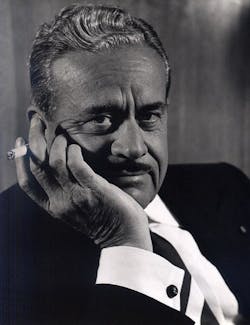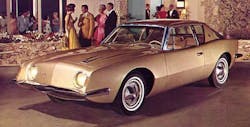Eye of the beholder
If everyone views trucks merely as machines highly engineered to accomplish very specific tasks, then why does anyone care what they look like?
Thirty-odd years ago, when I started covering this business, I didn’t give any thought to what most fleet trucks looked like. Mainly because they looked pretty much the same as the ones I’d seen as a boy. Their look was wholly utilitarian. They were no-fuss “rolling stock,” which was how fleets invariably referred to them.
It was the escalating fuel prices of the ’70s on into the ’80s that ultimately brought on the golden age of truck design that benefits the industry still. The first responders to the crisis were makers of add-on aerodynamic deflectors.
Then in 1985 came the rollout of the radically aerodynamic and thus game-changing Kenworth T600. The tractor’s development had begun some years before as the project had been launched in response to the 1973 oil crisis.
The seminal 1985 Kenworth T600: The true beauty of the "Anteater" was its wind-cheating curves
An engineering team led by the late Larry Orr, then Paccar’s R&D chief, strived to design a tractor that would be aerodynamic enough to be significantly more fuel-efficient than a long-nose conventional (it was— by a whopping 22%) yet deliver all the other attributes expected of a freight hauler.
Orr’s team also gave the sloped-hooded Anteater— the nickname awarded it by truckers-- a set-back front axle to improve front-axle loading and a much smaller turning radius than other conventionals. And the T600’s sleek design also threw off 50% less splash and spray than other models.
I’ve no way of knowing if Orr and company were inspired in their efforts in any way by Raymond Loewy, long honored as the “Father of Industrial Design.”
French-born Loewy transformed his scond homleand-- the U.S.-- into the epicenter of 20th-century industrial design
The transportation-related clients of the Franco-American designer ranged from International Harvester (Metro vans/trucks of the ‘30s), Chrysler, Ford, General Motors and Studebaker-- as in the Avanti!-- to Greyhound Lines (the Scenicruiser motorcoach) to Shell Oil (its literally perfect wordless logo) to the interiors of NASA spacecraft, including the once-orbiting Skylab.
Loewy is most commonly thought of as visually oriented. He is, after all, credited with streamlining American industrial design.
Yet it was he who pointed out that “good appearance was a salable commodity” as “it often cut costs, enhanced a product’s prestige, raised corporate profits, [and] benefited the customer.”
What Loewy sketched out on paper to enhance the look of a product invariably also improved its functionality.
It’s noted on his legacy website that “while Loewy introduced slanted windshields, built-in headlights, and wheel covers for automobiles, he also advocated lower, leaner and more fuel-efficient automobiles long before fuel economy became a concern.”
When he was engaged to lead a team given just 40 days to create from the ground up the still seductive design of the Studebaker Avanti, Loewy put up a sign declaring "Weight is the enemy."
Fifty years on, the Loewy-sculpted Studebaker Avanti remains emblematic of American automotive-design excellence
One upshot of that posted maxim: The rakish luxury coupe sported no grill whatsoever.
Loewy’s take on that sums up how he melded style and substance: "In this age of fuel shortages [this was in 1962!], you must eliminate weight.”
Then he added the kicker: “Who needs grills? Grills I always associate with sewers."
There you have it, the secret of good design.
And from there, we may surely infer that when it comes to trucks, beauty ought to be, well, much more than sheet-metal deep.
David Cullen (left) is Executive Editor of FleetOwner/fleetowner.com
He can be reached at [email protected]
David can be followed on Twitter: @David_L_Cullen




